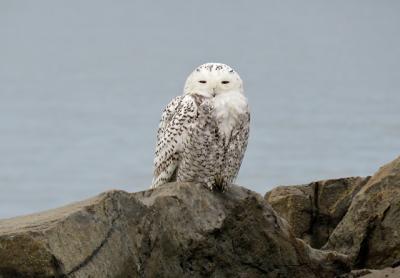Nature Notes: The Remarkable Feather

A feather is a heck of a thing. Yankee Doodle stuck one in his cap and called it “macaroni” almost three centuries ago. Native Americans used feathers at the end of the arrows to make them go straighter when launched from the bow. Feathers are used far and wide and during the kill-for-plumes era here in America, several plume bearers such as the egrets almost became extinct, which led to the Migratory Bird Treaty Act of 1918 in the United States, which banned almost all forms of plume hunting. Thereafter, our brilliantly plumed birds were protected by federal agents enforcing federal law and their populations began to recover. From then on ladies’ hats would become plumeless, boas would become a thing of the past, and feather dusters would be replaced with synthetic bristle brushes.
I know a thing or two about feathers. At six years of age I began plucking chickens on my grandfather’s white leghorn poultry farm next door in Mattituck. I became the fastest chicken plucker in town, and with the earnings was able to buy my own penny candies at Gildersleeve’s market in Mattituck on my way back from grade school each day.
The individual feather is not only a finely crafted thing of beauty; in its heyday it had a variety of human uses, everything from sweeping dust off the floor to keeping one warm at night. The down from the female eider duck is the softest and most costly of the world’s feathers. You won’t find any in my pillow.
On birds, the feather serves as a sex symbol, nest softener, water shield, insulator and thermal regulator, and, of course, as a flight enabler.
Reptiles in the age of dinosaurs evolved feathers as early as in the Triassic period, some 200 million years ago. Without feathers there would be no flying vertebrates, there would be no flying birds, which developed from flying reptiles. The first feathers were derived from early reptilian scales; both are composed mostly of beta-keratin. Scientists have been working on modern alligator scales in various ways and have thus far succeeded in getting them to develop into primitive plumose structures.
The first reptilian feathers found in Chinese fossils were probably used for thermoregulation and body armor protection, among other things, but reptilian feathers used for flying came much later, as in the fabled archaeopteryx. In order to use feathers for flight, the sternum has to have a keel for the attachment of muscles needed to drive flight. Archaeopteryx had a keel, as do all flying birds. Ratites — the ostriches, rheas, emus, and the like — have feathers but lack the sternal keel.
Some of the early reptilian feathers were pigmented, suggesting that colored scales came later. Both sexes of cassowaries of the Southeast Asian islands are brilliantly colored, but these ratites, like the others, cannot fly. Strikingly colored plumes are mostly restricted to the males of bird species, which make males more obvious to detect by would-be predators such as bird hawks.
Of the modern vertebrates, the classes of fishes and birds are the most colorful and the most species-rich. There must be an obvious evolutionary advantage to hued scales and hued feathers. Birds are more advanced in some respects, as they can molt colorful feathers and grow less colorful ones as we see in the Baltimore oriole, several warbler species, and many ducks. The less colorful plumage offers more protection against predators and signals to females that males are not in a condition to mate.
In reptiles such as snakes, when it comes time to get rid of the old worn-out scales and take on new ones, the entire skin is molted at once. The bird feathers are molted one or two at a time. When you see a crow, mourning dove, or herring gull that seems to be missing a few wing feathers fly over, it is a signal that the bird is replacing old primaries with new ones. Mammals shed their old fur and replace it with new fur imperceptibly, say as they leave summer and head into winter or leave winter for spring.
Evolution, they say, is forever ongoing, but as far as I can tell in my lifetime there have been no completely new structures developed from older different structures, say feathers from scales, fingernails and toenails from claws, flippers from paws, long tails from no tails and vice versa, and the like, suggesting that in nature it takes a very, very long time for a new anatomical feature or organ to evolve from an older one. Such is probably going on, but to see it we would need a million-years’-long time-lapse photographic study of an older form as it very gradually changes into a newer more advanced one.
We only see such rapid change when it comes to inorganic evolution, in trains, planes, automobiles, phones, computers, radios, energy generators, and so on.
Larry Penny can be reached via email at [email protected].
